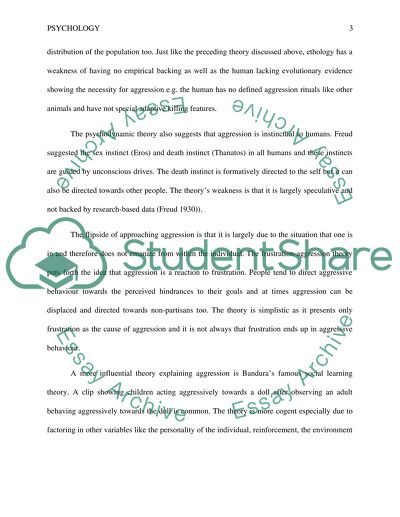Cite this document
(“Aggressive behaviour Essay Example | Topics and Well Written Essays - 1000 words”, n.d.)
Aggressive behaviour Essay Example | Topics and Well Written Essays - 1000 words. Retrieved from https://studentshare.org/psychology/1596811-to-what-extent-is-aggressive-behaviour-the-result-of-dispositional-and-situational-factors
Aggressive behaviour Essay Example | Topics and Well Written Essays - 1000 words. Retrieved from https://studentshare.org/psychology/1596811-to-what-extent-is-aggressive-behaviour-the-result-of-dispositional-and-situational-factors
(Aggressive Behaviour Essay Example | Topics and Well Written Essays - 1000 Words)
Aggressive Behaviour Essay Example | Topics and Well Written Essays - 1000 Words. https://studentshare.org/psychology/1596811-to-what-extent-is-aggressive-behaviour-the-result-of-dispositional-and-situational-factors.
Aggressive Behaviour Essay Example | Topics and Well Written Essays - 1000 Words. https://studentshare.org/psychology/1596811-to-what-extent-is-aggressive-behaviour-the-result-of-dispositional-and-situational-factors.
“Aggressive Behaviour Essay Example | Topics and Well Written Essays - 1000 Words”, n.d. https://studentshare.org/psychology/1596811-to-what-extent-is-aggressive-behaviour-the-result-of-dispositional-and-situational-factors.


